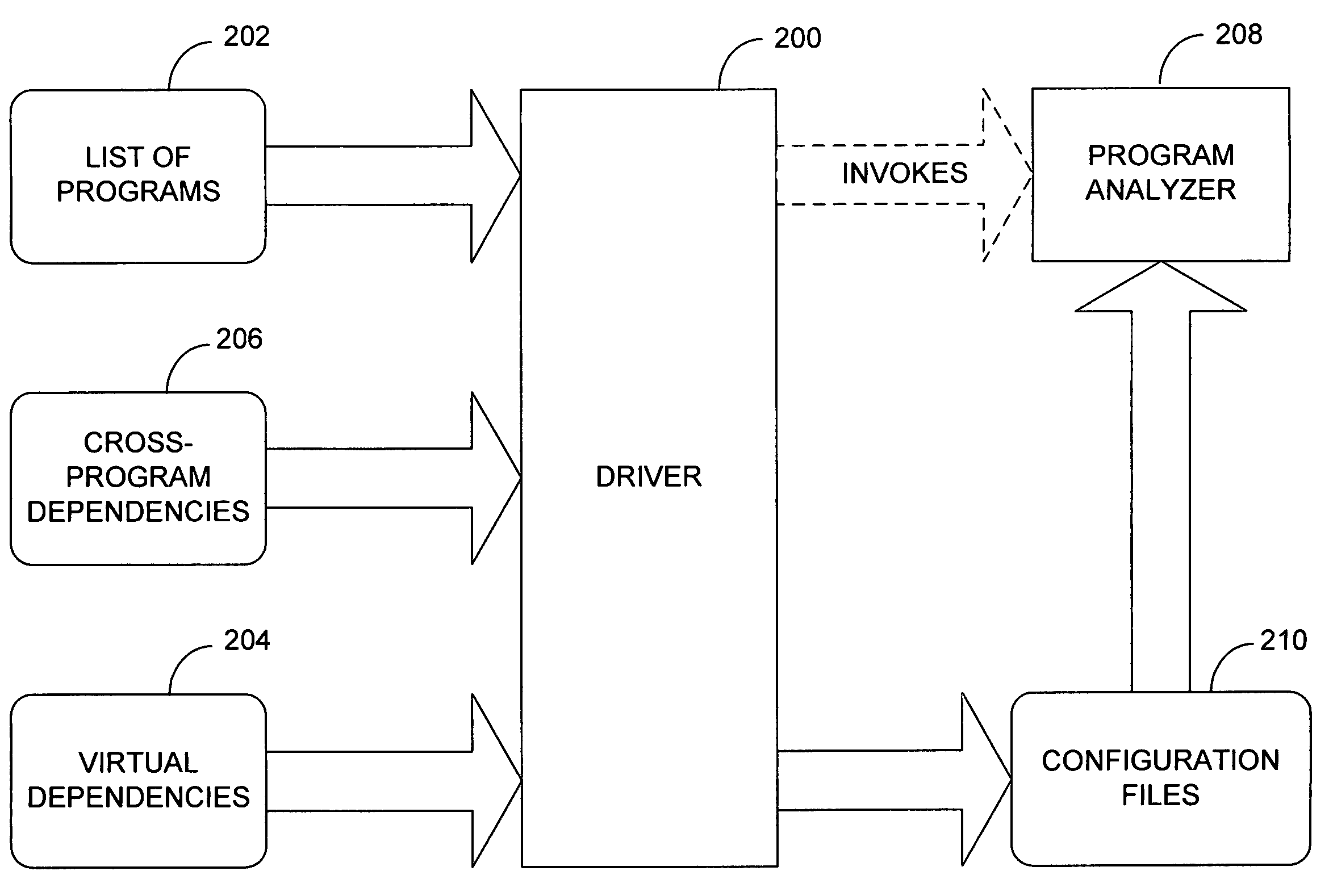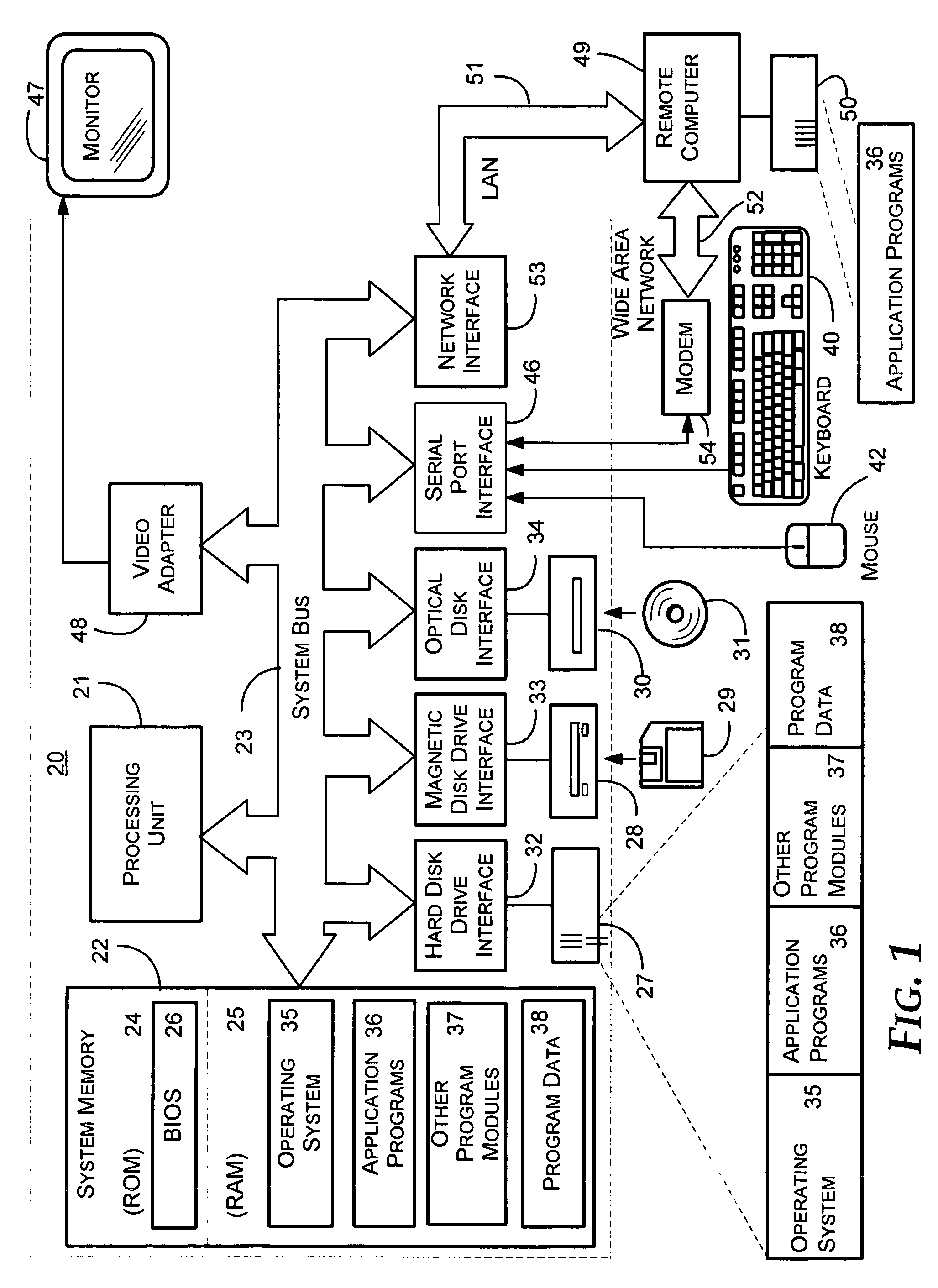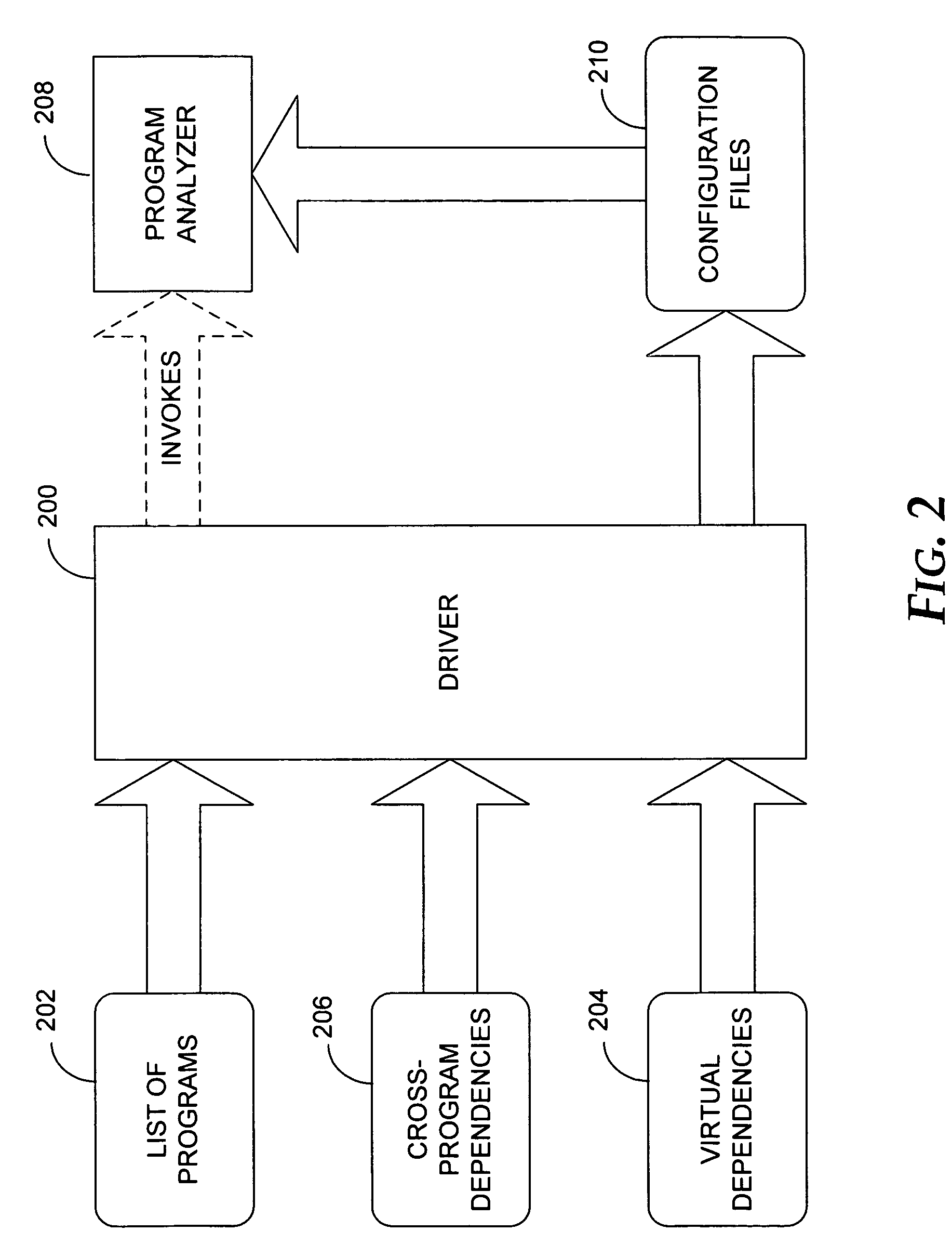System and method for whole-system program analysis
a software system and program analysis technology, applied in the field of computer program analysis, can solve the problems of inability to determine the scope of compile-time checking, inability to develop computer programs, and inability to accurately represent the defect detection of multiple computer programs, so as to facilitate the detection of defect detection in a software system made of multiple computer programs
- Summary
- Abstract
- Description
- Claims
- Application Information
AI Technical Summary
Benefits of technology
Problems solved by technology
Method used
Image
Examples
example embodiments
[0039]According to various embodiments of the present invention, a whole-system analysis tool receives as input a list of programs or components making up the system to be analyzed and a list of cross-program dependencies. The cross-program dependencies can be specified as a text file or as records in a database.
[0040]These dependencies are then analyzed to determine which program analyses must be applied, the appropriate order in which the analyses should be applied, and the inputs and outputs of each program analysis. In one embodiment, the order is computed in a single pass; in another embodiment, the analysis tool instead determines which program should be analyzed next at any point in time. The inputs and outputs of each program analysis are passed to the individual program analyses in the form of configuration files, for example, for the PREfix analysis tool. The program analysis tool is then invoked on each individual program to be analyzed. Alternatively, the inputs and outp...
PUM
 Login to View More
Login to View More Abstract
Description
Claims
Application Information
 Login to View More
Login to View More - R&D
- Intellectual Property
- Life Sciences
- Materials
- Tech Scout
- Unparalleled Data Quality
- Higher Quality Content
- 60% Fewer Hallucinations
Browse by: Latest US Patents, China's latest patents, Technical Efficacy Thesaurus, Application Domain, Technology Topic, Popular Technical Reports.
© 2025 PatSnap. All rights reserved.Legal|Privacy policy|Modern Slavery Act Transparency Statement|Sitemap|About US| Contact US: help@patsnap.com



